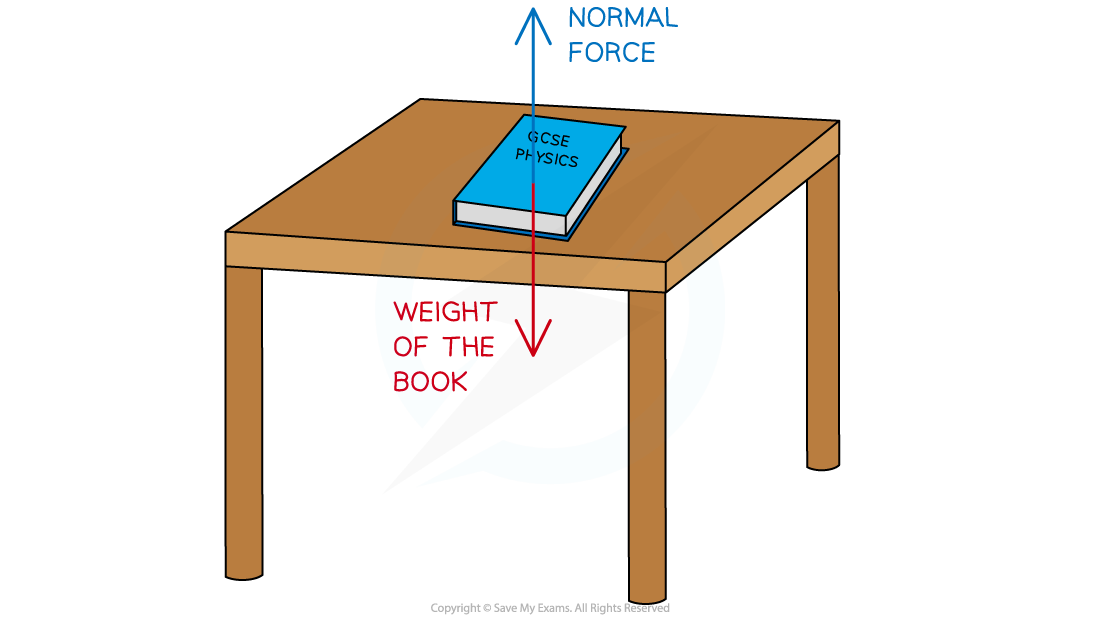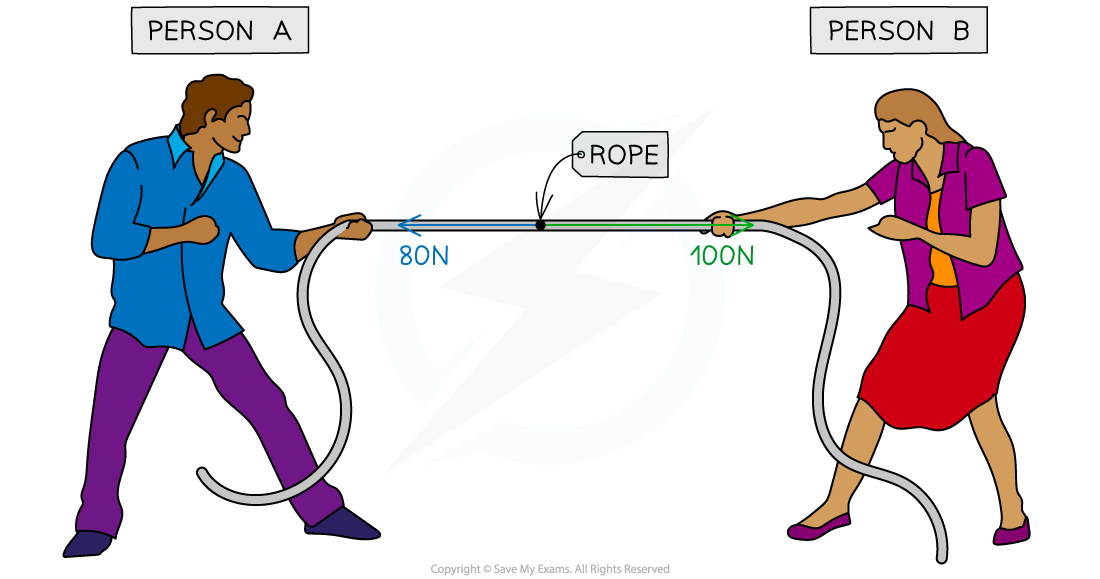Unbalanced Forces (Edexcel IGCSE Physics): Revision Note
Exam code: 4PH1
Unbalanced forces
When multiple forces act on a single object, the forces can be added together to produce a resultant force
When the forces acting on an object completely cancel out
the forces are balanced
the resultant force is zero
When the forces acting on an object do not completely cancel out
the forces are unbalanced
there is a resultant force
Balanced forces
Balanced forces mean that the forces have combined in such a way that they cancel each other out and no resultant force acts on the body
For example, the weight of a book on a desk is balanced by the normal force of the desk
As a result, no resultant force is experienced by the book, the book and the table are equal and balanced

A book resting on a table is an example of balanced forces
Unbalanced forces
Unbalanced forces mean that the forces have combined in such a way that they do not cancel out completely and there is a resultant force on the object
For example, imagine two people playing a game of tug-of-war, working against each other on opposite sides of the rope
If person A pulls with 80 N to the left and person B pulls with 100 N to the right, these forces do not cancel each other out completely
Since person B pulled with more force than person A the forces will be unbalanced and the rope will experience a resultant force of 20 N to the right

A tug-of-war is an example of when forces can become unbalanced
Unbalanced Forces, Mass & Acceleration
When forces combine on an object in such a way that they do not cancel out, there is a resultant force on the object
This resultant force causes the object to accelerate (i.e. change its velocity)
The object might speed up
The object might slow down
The object might change direction
The relationship between resultant force, mass and acceleration is given by the equation:
F = m × a
Where:
F = resultant force, measured in newtons (N)
m = mass, measured in kilograms (kg)
a = acceleration, measured in metres per second squared (m/s2)
This equation is also known as Newton's second law of motion
Worked Example
A car salesperson claims that their best car has a mass of 900 kg and can accelerate from 0 to 27 m/s in 3 seconds.
Calculate:
a) The acceleration of the car in the first 3 seconds.
b) The force required to produce this acceleration.
Answer:
Part (a)
Step 1: List the known quantities
Initial velocity = 0 m/s
Final velocity = 27 m/s
Time, t = 3 s
Step 2: State the equation for acceleration
Step 3: Calculate the acceleration
Part (b)
Step 1: List the known quantities
Mass of the car, m = 900 kg
Acceleration, a = 9 m/s2
Step 2: Identify which law of motion to apply
The question involves quantities of force, mass and acceleration, so Newton's second law is required:
Step 3: Calculate the force required to accelerate the car
Worked Example
A passenger of mass 70 kg travels in a car at a speed of 20 m/s. The vehicle is involved in a collision, which brings the car (and the passenger) to a halt in 0.1 seconds.
Calculate:
a) The deceleration of the car (and the passenger).
b) The decelerating force on the passenger.
Answer:
Part (a)
Step 1: List the known quantities
Initial velocity, u = 20 m/s
Final velocity, v = 0 m/s
Time, t = 0.1 s
Step 2: Write out the equation for acceleration
Step 3: Calculate the deceleration of the car (and the passenger):
Part (b)
Step 1: List the known quantities
Mass of the passenger, m = 70 kg
Acceleration (deceleration, in this case), a = −200 m/s2
Step 2: State the relationship between resultant force, mass and acceleration
This question involves quantities of force, mass and acceleration, so the appropriate equation for this case is:
Step 3: Calculate the decelerating force
Examiner Tips and Tricks
Remember that the resultant force is a vector quantity. Examiners may ask you to comment on why its value is negative - this happens when the resultant force acts in the opposite direction to the object's motion. In the worked example above, the resultant force opposes the passenger's motion, slowing them down (decelerating them) to a halt, this is why it has a minus symbol.

Unlock more, it's free!
Did this page help you?